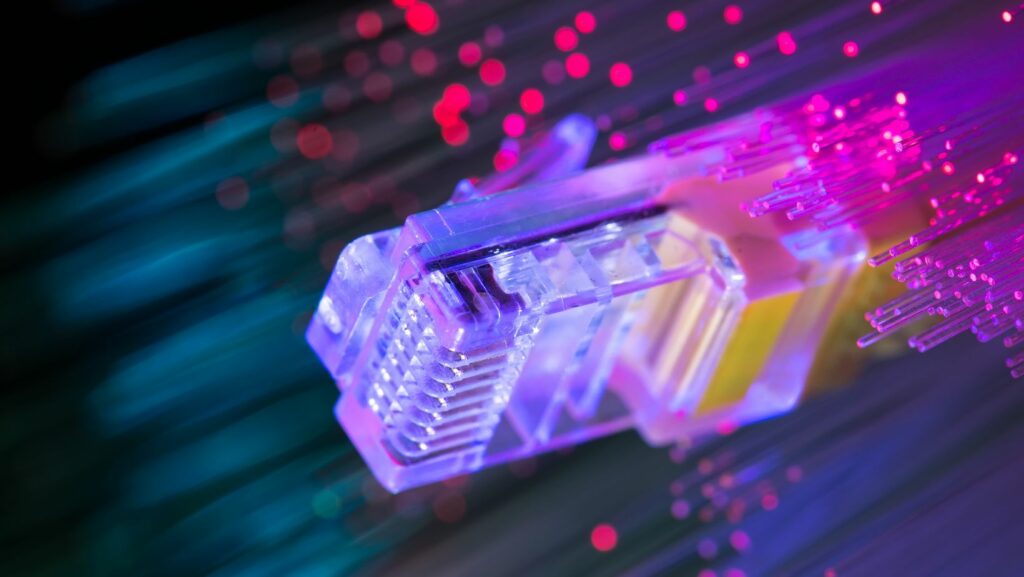Key Takeaways
- Rapid Innovation: Hi-tech and consumer electronics are leading advancements in technology, transforming daily life with devices that enhance convenience and functionality.
- Key Technologies: Innovations like AI, 5G, and IoT are crucial, enabling smarter user experiences, connectivity, and automation in devices ranging from smartphones to smart home gadgets.
- Consumer Focus on Sustainability: The industry is increasingly prioritizing eco-friendly practices and sustainable products, appealing to environmentally conscious consumers through recyclable materials and energy-efficient designs.
- Impact of Social Media: Social platforms significantly influence consumer preferences by showcasing new products and shaping perceptions through reviews and influencer endorsements.
- Growth Projections: The consumer electronics market is expected to grow at an 8% CAGR from 2023 to 2030, driven by rising demand for smart technologies and advancements in remote work and e-commerce.
- Future Innovations: Upcoming trends include enhanced AI personalization, improved device interoperability, advanced augmented and virtual reality applications, and a commitment to sustainable manufacturing practices.
In today’s fast-paced world, hi-tech and consumer electronics are at the forefront of innovation, shaping how people interact with technology. From smart home devices to cutting-edge smartphones, these products not only enhance convenience but also transform daily life. As advancements continue to emerge, consumers are constantly seeking the latest gadgets that promise improved functionality and efficiency.
The landscape of consumer electronics is evolving rapidly, driven by trends like artificial intelligence and the Internet of Things. This dynamic environment offers endless possibilities, making it essential for tech enthusiasts and everyday users alike to stay informed about the latest developments. Understanding these innovations can help individuals make informed choices that elevate their tech experience.
Hi-Tech & Consumer Electronics
Hi-tech and consumer electronics encompass a wide range of devices and systems that significantly improve daily life. These products include smartphones, tablets, smart TVs, wearables, and smart home gadgets. They integrate advanced technology to enhance user experiences and streamline tasks.
Transformations in the market arise from key innovations such as artificial intelligence, machine learning, and the Internet of Things (IoT). AI enables devices to learn user preferences, while IoT connects various devices for seamless communication. This connectivity facilitates automation, offering users control over their environments from a single interface.
The impact of these technologies manifests in various sectors, including healthcare, education, and entertainment. For instance, health monitoring devices provide real-time data, enabling users to track fitness goals and health conditions. Similarly, smart home systems offer improved energy efficiency and security through connected appliances and surveillance.
Consumers benefit significantly from these advancements. Access to the latest technology influences purchasing decisions, as buyers seek products that offer enhanced features and convenience. Manufacturers compete to deliver innovative solutions, fostering a rapidly evolving market landscape.
Keeping abreast of trends in hi-tech and consumer electronics is crucial for informed decision-making. Awareness of developments allows users to select devices that best suit their needs, whether for productivity, entertainment, or home automation. This knowledge empowers consumers to enhance their technology experiences effectively.
Key Trends in Hi-Tech & Consumer Electronics
Hi-tech and consumer electronics continue to evolve, propelled by emerging technologies and a focus on sustainability. These trends shape user experiences and influence purchasing decisions worldwide.
Emerging Technologies
 Emerging technologies significantly impact the hi-tech and consumer electronics landscape. Innovations like 5G connectivity enhance device performance and enable real-time data transfer. Artificial intelligence (AI) plays a crucial role by powering smart assistants that personalize user interactions. Augmented reality (AR) and virtual reality (VR) technologies create immersive environments that revolutionize gaming and shopping experiences. Wearable technologies, including smartwatches and fitness trackers, integrate health monitoring with connectivity features, increasing consumer engagement. Additionally, robotics continues to advance, leading to autonomous devices that improve efficiency in households and industries alike.
Emerging technologies significantly impact the hi-tech and consumer electronics landscape. Innovations like 5G connectivity enhance device performance and enable real-time data transfer. Artificial intelligence (AI) plays a crucial role by powering smart assistants that personalize user interactions. Augmented reality (AR) and virtual reality (VR) technologies create immersive environments that revolutionize gaming and shopping experiences. Wearable technologies, including smartwatches and fitness trackers, integrate health monitoring with connectivity features, increasing consumer engagement. Additionally, robotics continues to advance, leading to autonomous devices that improve efficiency in households and industries alike.
Sustainability in Electronics
Sustainability emerges as a critical focus in the consumer electronics industry. Manufacturers develop eco-friendly devices utilizing recyclable materials and energy-efficient technologies. The rise of the circular economy encourages repairability and refurbishment, reducing electronic waste. Companies now prioritize carbon-neutral production processes and transparent supply chains to appeal to environmentally conscious consumers. Smart home technologies also contribute to sustainability efforts by optimizing energy consumption, allowing users to monitor and control their environmental impact. As awareness grows, consumers increasingly demand sustainable practices, leading manufacturers to innovate responsibly in the hi-tech sector.
Popular Hi-Tech Products
Hi-tech products significantly shape everyday life, offering innovative solutions across various needs. The following categories showcase some of the most popular and impactful devices in the consumer electronics landscape.
Smartphones
Smartphones represent a vital segment of the hi-tech market, blending communication, entertainment, and productivity into one device. Current models feature advanced processors, high-resolution cameras, and extensive app ecosystems. Brands like Apple and Samsung continuously push boundaries with innovations such as foldable screens and 5G connectivity. Users benefit from functionalities like facial recognition, biometric security, and AI-powered assistants that enhance convenience. The ongoing development of features like augmented reality also enriches gaming and shopping experiences.
Smart Home Devices
Smart home devices simplify daily routines and enhance efficiency through automation and connectivity. Products such as smart speakers, smart thermostats, and security cameras provide seamless integration within home networks. Leading brands include Amazon with its Echo line, Google with the Nest series, and various startups offering niche solutions. These devices leverage IoT to allow remote monitoring and control through mobile apps, increasing energy efficiency and security. Voice-controlled connectivity enables users to operate appliances simply by speaking, streamlining household tasks.
Wearable Technology
Wearable technology has gained traction, providing users with connected devices that monitor health and fitness. Popular examples include smartwatches and fitness trackers like the Apple Watch and Fitbit. These devices track metrics such as heart rate, sleep patterns, and physical activity, offering insights into personal well-being. Integration with smartphones ensures users receive notifications and manage apps directly from their wrists. As features evolve, wearables now support functionalities such as ECG monitoring and blood oxygen tracking, directly impacting health management.
Consumer Behavior and Preferences
Consumer behavior in the hi-tech and consumer electronics landscape reflects shifting trends and preferences shaped by technology and market dynamics. Understanding these aspects, including social media influence and price sensitivity, plays a vital role in informing purchasing decisions.
Impact of Social Media
Social media significantly affects consumer choices in the hi-tech sector. Platforms like Instagram and TikTok showcase the latest gadgets and innovations, creating a buzz that drives consumer interest. User-generated content, including reviews and unboxing videos, offers real-world insights into products, helping potential buyers gauge quality and usability. Influencers also play a critical role by endorsing products, which can lead to increased brand visibility and sales. Companies leverage social media marketing strategies to engage with audiences, respond to feedback, and ultimately shape consumer perceptions about technology trends.
Price Sensitivity
Price sensitivity remains a crucial factor influencing consumer behavior in the hi-tech market. Many consumers carefully evaluate their budgets before purchasing electronics, leading to heightened competition among manufacturers to deliver affordable offerings. Promotional strategies, such as discounts and bundled deals, attract cost-conscious shoppers, while premium pricing may appeal to those seeking high-quality features and brand prestige. Market research indicates that about 60% of consumers prioritize price over brand when selecting tech products. This trend forces manufacturers to adapt their pricing strategies to meet consumer demands while maintaining product quality and innovation.
Future of Hi-Tech & Consumer Electronics
The future of hi-tech and consumer electronics is marked by exponential growth and groundbreaking innovations. Key trends will shape both the market landscape and consumer experiences in the coming years.
Predictions for Market Growth
Market analysts project steady growth in the hi-tech and consumer electronics sector, driven by increasing consumer demand for smart devices. According to recent reports, the global consumer electronics market anticipates a compound annual growth rate (CAGR) of approximately 8% from 2023 to 2030. This growth stems from the expansion of 5G technology, the rise of e-commerce, and the growing trend of remote work, all enhancing the demand for advanced and connected devices. Additionally, emerging markets in Asia-Pacific and Latin America are expected to contribute significantly to market expansion as access to technology improves.
| Year | Projected Market Size (in Billion USD) |
|---|---|
| 2023 | 1,100 |
| 2024 | 1,200 |
| 2025 | 1,300 |
| 2026 | 1,400 |
| 2027 | 1,500 |
| 2028 | 1,600 |
| 2029 | 1,700 |
| 2030 | 1,900 |
Innovations on the Horizon
 Several groundbreaking innovations will shape the future of hi-tech and consumer electronics. Advancements in artificial intelligence (AI) will lead to more personalized and intuitive device interactions. Features like voice recognition and predictive analytics will enhance user experiences by providing context-aware assistance.
Several groundbreaking innovations will shape the future of hi-tech and consumer electronics. Advancements in artificial intelligence (AI) will lead to more personalized and intuitive device interactions. Features like voice recognition and predictive analytics will enhance user experiences by providing context-aware assistance.
Smart home technologies are expected to advance further, with increased interoperability among devices through ecosystems like Matter. This interoperability will enable seamless communication between various brands and devices, enhancing convenience and control.
Augmented reality (AR) and virtual reality (VR) technologies will also make significant strides. These technologies will create immersive experiences across diverse applications, from gaming to virtual meetings, enriching how users engage with content.
Wearable technology will continue to evolve with enhanced health monitoring capabilities. Future wearables could incorporate advanced sensors for more accurate health data, facilitating proactive health management.
Lastly, as sustainability gains importance, manufacturers will prioritize eco-friendly materials and processes. Innovations in recycling and product life cycle management will shape the creation of sustainable consumer electronics, reflecting consumer demand for environmentally responsible choices.
Artificial Intelligence and IoT
The landscape of hi-tech and consumer electronics continues to evolve at an astonishing pace. Innovations are not just enhancing convenience but also reshaping how individuals interact with technology daily. As advancements in artificial intelligence and IoT become more prevalent, consumers are better equipped to make informed choices that suit their lifestyles.
Sustainability is now a key consideration for both manufacturers and consumers, driving the development of eco-friendly devices and practices. With the ongoing growth in this sector, the future promises even more exciting advancements that will further integrate technology into everyday life. Staying updated on these trends will empower consumers to navigate this dynamic market effectively.

